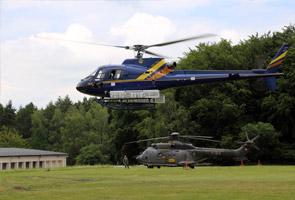Marie-France Bellin is appointed Chair of the Board of Directors at IRSN

Recommended by the Ministre d'État, Minister for the Ecological and Inclusive Transition and Minister of Higher Education, Research and Innovation, and further to a resolution issued by the Council of Ministers held on the 21st of November 2018, Marie-France Bellin, MD, PhD, Professor of Radiology, has been appointed Chair of the Board of Directors at the Institute of Radiation Protection and Nuclear Safety.
Marie-France Bellin was auditioned, Wednesday 14 November 2018, by the relevant parliamentary committees to fulfill the duties as IRSN Chair of the Board of Directors, after being proposed by the IRSN Board of Directors as a result of the meeting held on the 6th of September 2018.
After the departure of Dominique Le Guludec, former Chair of IRSN Board of Directors and appointed President of the College of the High Authority of Health on December 2017, the interim of this function was provided by Laurent Moché, the Finance Committee Chairman of the IRSN Board of Directors.
Born in 1955, Marie-France Bellin is the Head of the Imaging and Nuclear Medicine Division of the Paris Sud University Hospitals since 2011.
From 2000 till 2008, she was Head of the Radiology Department at Paul Brousse Hospital. In 2008, she became Head of the Diagnostic and Interventional Radiology Department of the Paul Brousse Hospital but also of the Bicêtre Hospital.
She was Professor of University-Hospital Practitioner at CHU Pitié Salpêtrière from 1996 to 2000. Since 2000, she is Professor of Universities-Hospital Practitioner at the Faculty of Medicine Paris-Sud.




